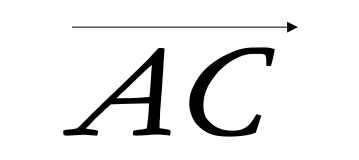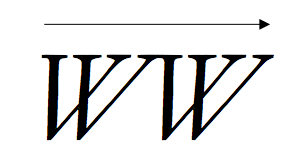Canvases Pale: A Minstrelsy So Easily Absorbed
And so I would like to make it clear that I am going to talk about race. Again. I would like to make it clear that my writing about race, like myself, is a collection of incomplete moments in time. It is clear, too, without my needing to make it so, that I bring largely the tools of my personal bodily experience, my limited breadth and depth of reading, to this complicated conversation. I come here with complicity, with limits, with the limits of complicity. I come here, perhaps, completely colonized. I do not trust—cannot trust—that I will not injure in my attempts. I am drawn to attempt none the less. That is complicity, that is privilege. Drawn to an attempt that I can indeed make. (Yes.)
I. HE-MEN, DOLT KNIGHTS
“It was published, as an experiment…” – William Wordsworth, “Preface to Lyrical Ballads” 1800
“The principal object, then, proposed in these Poems was to choose incidents and situations from common life, and to relate or describe them, throughout, as far as was possible in a selection of language really used by men, and, at the same time, to throw over them a certain colouring of imagination, whereby ordinary things should be presented to the mind in an unusual aspect; and, further, and above all, to make these incidents and situations interesting by tracing in them, truly though not ostentatiously, the primary laws of our nature…” –William Wordsworth, “Preface to Lyrical Ballads” 1800 (emphasis added)
“I altered the text for poetic effect; I translated into plain English many obscure medical terms that would have stopped the flow of the text; I narrativized it in ways that made the text less didactic and more literary…[…] I always massage dry texts to transform them into literature…”—Kenneth Goldsmith, 2015 (emphasis added)
“Conceptual poetry is an early twenty-first century literary movement, self-described by its practitioners as an act of “uncreative writing.” In conceptual poetry, appropriation is often used as a means to create new work, focused more on the initial concept rather than the final product of the poem.” –poets.org (emphasis added.)
I include these quotes and definitions in an effort to lay some (limited) groundwork for a reading of conceptual poetics and practices that does not make “newness” or the digital age intrinsic properties.
In my past post, “The Whitest Boy Alive,” I ended by stating that I am interested in the pressure of “poetic effect” on “conceptual poetics.” Conceptual poetics are often cast as existing in a binaristic and oppositional relationship to “the poetic” (a potentially false binary).
This particular piece of conceptual writing (and perhaps it never was) that is “The Body of Michael Brown” failed its concept at the moment of altering the text for poetic effect.
(Note that “success” is not possible for this particular work. Note too that “success,” like “failure,” is an ill-measurement for “work” like this.)
It is hard to say what constitutes the “literary,” but Goldsmith’s statement reveals a battle for coherence that can be deduced from his acknowledgement of massaging the text, and that he was curiously compelled to do so in order for the text to register as “poetry” (which for many it did not. It registered as tastelessly engineered spectacle.) Part of this massage act apparently included rearranging the text to end on remarks about Michael Brown’s genitalia. It is possible that:
A. ending on genitalia is being used to create a memorable “poetic effect” (perhaps that of epiphany, an important characteristic of “poetic effect” or “conventional lyricism”). Endings carry the weight of providing final, crucial, and sometimes the most important information. (Skip to the end. “You must change your life.”)
B. the ending consciously participates in historical and contemporary emphasis on black male genitalia and sexuality as elements to be feared, policed, lynched, removed, etc.
C. the ending unconsciously participates in the emphasis outlined in B. If so, this suggests the extent to which all literatures and writers will encounter ideologies almost impossible to suppress without conscious work (and even then!); lest these racist ideologies unconsciously assert themselves and be revealed through language.
B and C are deployed, with greater or less impact, by the strategy of A. Taken together they represent what Toni Morrison calls a “helplessness of excising racial considerations from formulations of white identity.” Writer Trisha Low states “I don’t understand how Kenny’s rhetoric of textual neutrality and objectivity is so willing to ignore the context of his subject position.” Willingness to ignore the context of subject position might be the concept. For this deployment of whiteness and appropriation to function in literature, it must ignore the context of its subject position in order to benefit from it.
II. A CANVAS PEELS
“…my primary medium is the situation […] It is also a white privilege.” –Vanessa Place (Artist Statement, Facebook)
The concept wasn’t possible without appropriation, appropriation was not possible without whiteness.

Where A is appropriation and C is concept, and the vector space is whiteness (and all its friends.) Concept C may equal “The Body of Michael Brown,” or, as the case may have it, it may equal Vanessa Place’s durational work of tweeting Gone With the Wind until, presumably, she is ordered to cease and desist for copyright infringement. That the vector space is whiteness, which is acknowledged by Place in her recent artist statement. Here whiteness understands itself as a critical component to the work, its genesis and performance. Part of the power of whiteness is achieved in its deft acknowledgement of said power, and in how this power can be deployed even in the face of its failure. (Here, “failure” might constitute the unquantifiable collateral damage of radically offending and hurting many more Black people than the numbers of white writers who were supposedly forced to confront the “whiteness behind the blackface,” and thus, somehow, dismantle something through forced recognition.)
“My minstrelsy was easily absorbed…”—Vanessa Place, 2015
It is unclear, yet, what is achieved by deliberately showing the “whiteness behind the blackface” in a text like Gone With the Wind. This whiteness-behind-blackface has been obvious since its initial writing and it is obvious behind every white frat boy yo, sup homie, ad infinitum. For Black people it is embarrassingly obvious and I would argue it has been obvious to whiteness as well. The difference is that whiteness doesn’t have to watch itself perform blackface. To force whiteness to watch its performance of blackface in literature (a performance that is 1) usually acceptable by white readers and writers 2) is acceptable in the culture at large) is to ___________?) If it is “cruelty to insist that only people of color be responsible for the articulation or the embodiment of race….” it may be an even greater cruelty to acknowledge complicity and have responsibility in the service of rehabilitating whiteness. The rehabilitation of whiteness is a white supremacist project.
Because rehabilitating whiteness is fashionable, because its cultural capital and cache appear in the forms of hashtags and retweets, it is rebranded as ally-ship. Even the hashtag #BlackLivesMatter constitutes a neoliberal equivalent of the ideological notion of consumable freedom, rendered available and accessible to those whose lives are not at stake. Unsurprisingly, as a friend noted, “it would make sense that a white-ally led schooling of other white people on silence would be loud and encroach on the rest of the conversation.” It may look something like this:

where the vector space is Blackness; wherein whiteness re-inscribes its authority by virtue of triumphant self-assessment. That whiteness can participate in and witness its dismantlement in order to rebrand and re-enfranchise itself (through literature, appropriation, and literary appropriation) may be the most important and active myth of Western civilization and neoliberal capitalism.
“Just as blackness itself is used as the filler for white lack.”—Vanessa Place, 2015

“I’m trying to kill the massa.” —overheard at the barbershop, 5/20/15
“That muthafucken Black Took Collective has made a new short video for your entermatainment.”—Dawn Lundy Martin, 2015
***
Note: “He men dolt knights” is an anagram of “Kenneth Goldsmith” and “Canvases Pale” and “A Canvas Peels” are anagrams of “Vanessa Place.”
Note: The Black Took Collective is Duriel Harris, Dawn Lundy Martin, and Ronaldo V. Wilson.
Lillian-Yvonne Bertram is the author of several books. Travesty Generator (Noemi Press, 2019) was a ...
Read Full Biography

